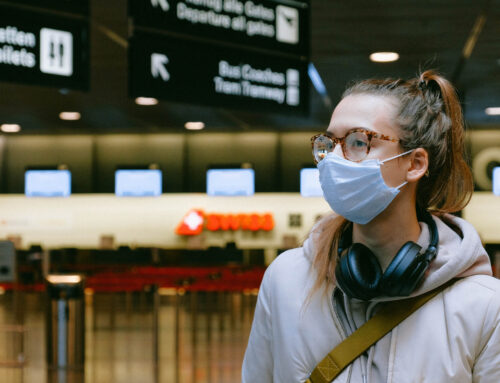Tali Sulcas reports on her university’s response to the pandemic:
During this unfamiliar circumstance where doubt and questioning the future are the status quo, institutions are doing their best to support the parties that they serve – and it’s time we trust and appreciate their efforts. It is an underrecognized reality that solutions to the struggles of college students are being considered and addressed by university decision-making bodies. The central principle that is alleviating the challenges that are being faced by thousands at this difficult time can be explained in one word – empathy. The solution to these struggles is empathy from higher education institutions.
Although universities and other higher education governing bodies are facing immense pressure from their ‘customers’, that is, students and their parents, to satisfy their immediate calls for financial compensation in the time of virtual classes and limited on-campus services, it should also be recognized that this pandemic is nobody’s fault. The importance of community safety is far greater than that of monetary issues. Or is it? Student financial struggle is just one of several issues that is just as, if not more, important than the issue of whether or not to close dorms. Others include decreased academic performance as a result of this turbulent environment, complications that come with technological administration of education, and institutional financial needs (and other needs) vs the demands of stakeholders, and the primary physical needs of students.
In this article, the issues of pass/fail accommodations for students, housing refunds, and true consideration of Arizona State University’s (ASU) large and diverse student body will be addressed.
It is 11 a.m. on Thursday, April 16, and the morning after ASU’s digital student body presidential election has come to a close. The e-interviewer is still in her pyjamas, and the e-interviewee is lying in his bed. Don’t let this relaxed environment fool you though. Stay-at-home orders and online-only school is not stopping Max Fees, ASU student body presidential candidate, and his running-mates Emma Short and Jack Fuller, and campaign manager Riley O’Toole, from demanding more for one of the USA’s largest universities. Here, Max chats to me about how ASU, as an institution, is not letting the pandemic stop them from maintaining the university’s status as a model forward-thinking research institution.
Although not technically a member of the Undergraduate Student Government (USG), which is the central political decision-making student body on ASU’s campus, Max has been heavily involved on-campus since his freshman year. His campaign, Expect More ASU, is centred on the principle that we should continue to demand only the best from ASU and its administrative bodies such as USG. Essentially, USG is the only hope that students have to bring their voice directly to the influential decision-makers; that is, Michael Crow, ASU President, and his associates.
On methods which the school is using to alleviate academic performance challenges, Fees says “(During the pandemic), the Senate has continued to meet virtually over Zoom and advocate for students. One of the most recent bills passed by USG was to offer the modified pass/fail option to students during this time, a “Y” grade. The senate went to
great lengths to implement this “Y” concept. The “Y” is a “boosted” pass/fail mark, meaning that the student not only passed the class but passed with sufficient marks to indicate the fulfilment of any requirements for progression in their chosen degree. A regular pass/fail mark indicates only the completion of hours. The USG actually conducted a statistically-relevant survey of around 1500 students to ask, ‘who’s in favour of a pass-fail option during this term?’” Results were overwhelmingly in favour. Dean (Cassandra) Aska responded with support for this policy, commenting that, “we are not going to mandate pass/fail grading because some students need that ‘A’ letter grade for their GPA.” A pass/fail or Y has no effect on a student’s GPA.
“Something that students don’t consider is that not all professors have the same amount of technical ability and training.” says anthropology professor Alissa Ruth. “ASU has done a great job, though, of making training available to all of us, so that those who are less familiar with Zoom and Canvas can get some extra skills while we are depending so heavily on those servers now. The fact is that we are all struggling at this time, and I consider myself really lucky that I am not facing some of the challenges students and other members of our community are dealing with right now.”
It is certainly true that much of the stress felt by the world community has to do with the uncertainty of what is to come, and college students, as well as their families, are no exception. Upon the declaration by many top-tier colleges, in mid-March, that education would transition to a virtual format, ASU students and their concerned parents waited anxiously for the announcement from Micheal Crow that the university would, too, follow suit in this manner. The statement was released considerably later than others nationwide, but ultimately it was decided that lectures and all associated educational activities and assessments would take an online format at least until the end of the Spring 2020 Semester. Subsequently, it has also been decided that the university will follow suit for Summer 2020 sessions as well, allowing students to still partake in summer classes but limiting the social contact. However, this online transition created a conundrum for students; the need to live in close proximity to campus was no longer relevant. Refunds or compensation for on-campus housing were not immediately announced and students started asking, “Do I go back to campus (after spring break) because I’m paying for it anyway? Wait, will I then be exposing myself more to COVID-19? Do I have another place to live right now? Would I even be able to afford to pay for another place to live?” Much tension and frustration towards ASU’s administration about their slow decision-making prevailed, as students became desperate for answers from the university.
“You know, it is true that both NAU (Northern Arizona University) and U of A (University of Arizona) responded to their student bodies quicker (than ASU did). But you also have to consider that we have far more on-campus students still living in the housing, and depending on ASU services. On the whole, we’re much larger than NAU and U of A. “ comments Fees. He is correct in pointing out this highly relevant issue, as ASU’s massive student body and a group of associated services considerably increase the gravity of decisions taken, especially with regard to promising financial compensation. “When this whole thing began, U of A said that they would be giving housing refunds. They pledged a lot of things to support students….there wasn’t a plan on how they decided they’re going to pay for it, they were just kind of saying ‘this is what we’re going to do.’ ASU went for a different approach and started working with their close connection to Zoom to formulate a plan to move classes over to the online format. ASU decided to continue to support students on campus as long as possible.” International and out of state students make up almost 40% of the student body on ASU’s four campuses (CollegeSimply, 2019), and this consideration of those students who can’t just hop in their parents car and move home is an example of the university’s dedication to their charter, which pledges to “be measured by whom it includes, not excludes”(Arizona State University, 2002).
Academic performance and housing are two of the many concerns that students seek support for, from their universities. Many students have lost their on-campus jobs, and are experiencing other COVID-19-related financial pressures. “The university (ASU) definitely hasn’t forgotten about these students (who depend on their jobs for income), and I know I still am getting weekly checks based on an average of my wages over this semester”, says Emma Hoffman, student employee who works at the Palo Verde West student housing front desk. For many though, there are still costs of moving and living at home, including flights and other costs related to moving out of on-campus residences. Dr Micheal Crow said in his interview with the State Press in early April that “the safety of our students is of far higher priority than anything else,” but he also made it clear that financial compensation was on the cards. In the end, students were offered a $1500 dollar refund to move out of on-campus housing by April 15. The outbreak of the pandemic is nobody’s fault, and the central issue is that both institutions and those whom they serve, need to consider the other party.
Arizona State University is making huge efforts to accommodate the challenges that their students and faculty find themselves needing solutions for. It may be true that the governing bodies did not react as quickly as we wanted them to, amidst our feelings of immense uncertainty, or refund us as much money as some students feel they deserve, or close campus early enough. But it is also true that the decision-makers are doing the best they can under the circumstances of their personal concerns and struggles, all while attempting to ensure the long-term health and survival of the institution, its students and all of its stakeholders.
Perhaps the greatest takeaway is to consider the solutions that have been implemented and to trust that those who have the decision-making power truly do have the best interests of the university at heart. The diverse range, and pure number, of students whose situations have been greatly improved by the support that is being provided by ASU is astounding.
If you wish to learn more about studying at ASU or in the USA please reach out to one of our advisors – CONTACT US




